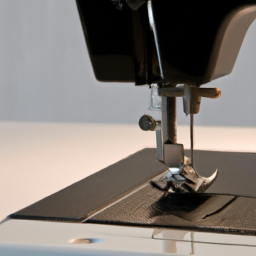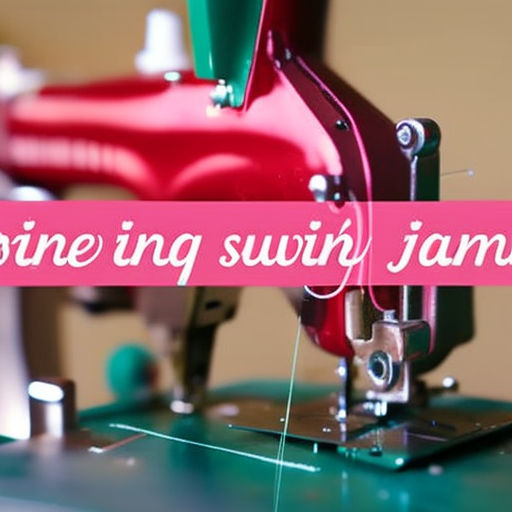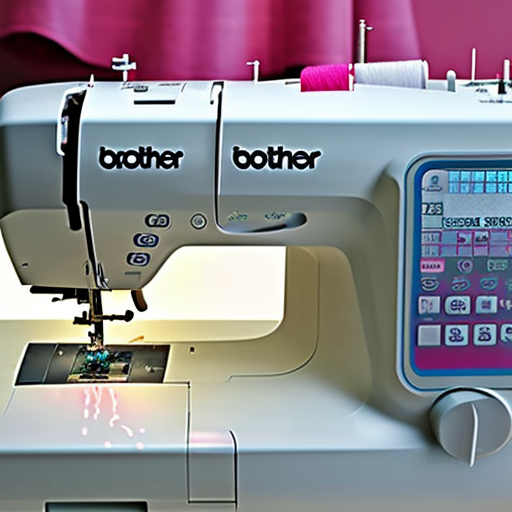
sewing-machine-jam.jpg” alt=”Sewing machine jamming” style=”width: 400px; height: auto;”>
When it comes to sewing, there’s nothing more frustrating than a sewing machine jamming in the middle of a project. It can cause delays, ruin fabric, and put a damper on your creative process. Understanding why sewing machine jams occur and learning how to prevent them can save you from these headaches.
1. Incorrect Threading
Improper threading is one of the most common causes of sewing machine jams. Ensure that the thread is properly threaded through the machine, including the bobbin area, tension disks, and needle. Refer to the manufacturer’s manual for specific instructions on how to thread your machine correctly.
2. Poor Quality Thread
Using poor quality thread can contribute to frequent jams. Thin, weak, or old thread may break easily, causing jams. Invest in good quality thread that matches your fabric and project requirements. Using the right thread can significantly improve your sewing experience and reduce jams.
3. Incorrect Needle Size
Having the wrong needle size for your fabric can cause jams. A needle that is too small may struggle to penetrate the fabric, while a needle that is too large can leave visible holes or damage the fabric, leading to a jam. Ensure you are using the correct needle size and type suitable for your project.
4. Bobbin Issues
Bobbin-related problems can also result in sewing machine jams. Make sure the bobbin is properly inserted, spinning freely, and wound evenly. Unevenly wound or improperly inserted bobbins can lead to thread snags and tangles, causing a jam. Regularly clean and maintain your bobbin case and area to prevent any buildup of lint or debris.
5. Lack of Lubrication
Insufficient lubrication can cause sewing machine parts to move sluggishly or become stuck, leading to jams. Follow your machine’s manual to identify areas that require lubrication and use appropriate sewing machine oil. Regular maintenance and lubrication can extend the life of your machine and minimize jams.
6. Incorrect Thread Tension
Incorrect thread tension can lead to stitching problems and jams. Ensure that your thread tension is properly adjusted. Too loose tension can cause thread looping, while excessive tension may cause the thread to break or jam the machine. Practice making tension adjustments based on the fabric and thread you are using.
7. Sewing Speed
The speed at which you sew can also affect the occurrence of jams. Sewing too fast can cause the fabric to bunch up, leading to jams. Maintain a consistent, moderate speed when sewing to avoid overwhelming the machine and reducing the chances of it jamming.
8. Dirty Machine
A sewing machine that is not cleaned regularly can accumulate lint, dust, and debris, which can clog the thread path and parts of the machine, leading to jams. Keep your machine clean and free from dirt by brushing away lint after each use and using compressed air to blow out any trapped particles.
Conclusion
Understanding the reasons why your sewing machine jams and taking preventive measures can save you time, frustration, and fabric wastage. Proper threading, using high-quality thread, selecting the correct needle size, ensuring bobbin functionality, regular lubrication, adjusting thread tension, maintaining an appropriate sewing speed, and keeping the machine clean are all essential in preventing sewing machine jams. With these precautions and regular maintenance, you can enjoy interruption-free sewing and achieve successful projects.





What can cause a sewing machine to jam?
Suzanna Lim: Is there a way to fix it?
Without an inspection of the machine, it’s hard to tell! But, some common causes are lack of lubrication, incorrect needle size, wrong type of thread, or a damaged part. Hopefully this post can help shed light on how to troubleshoot and fix sewing machine jams.
Thanks for the helpful information!